Communication Styles Worksheets (4 Pages)
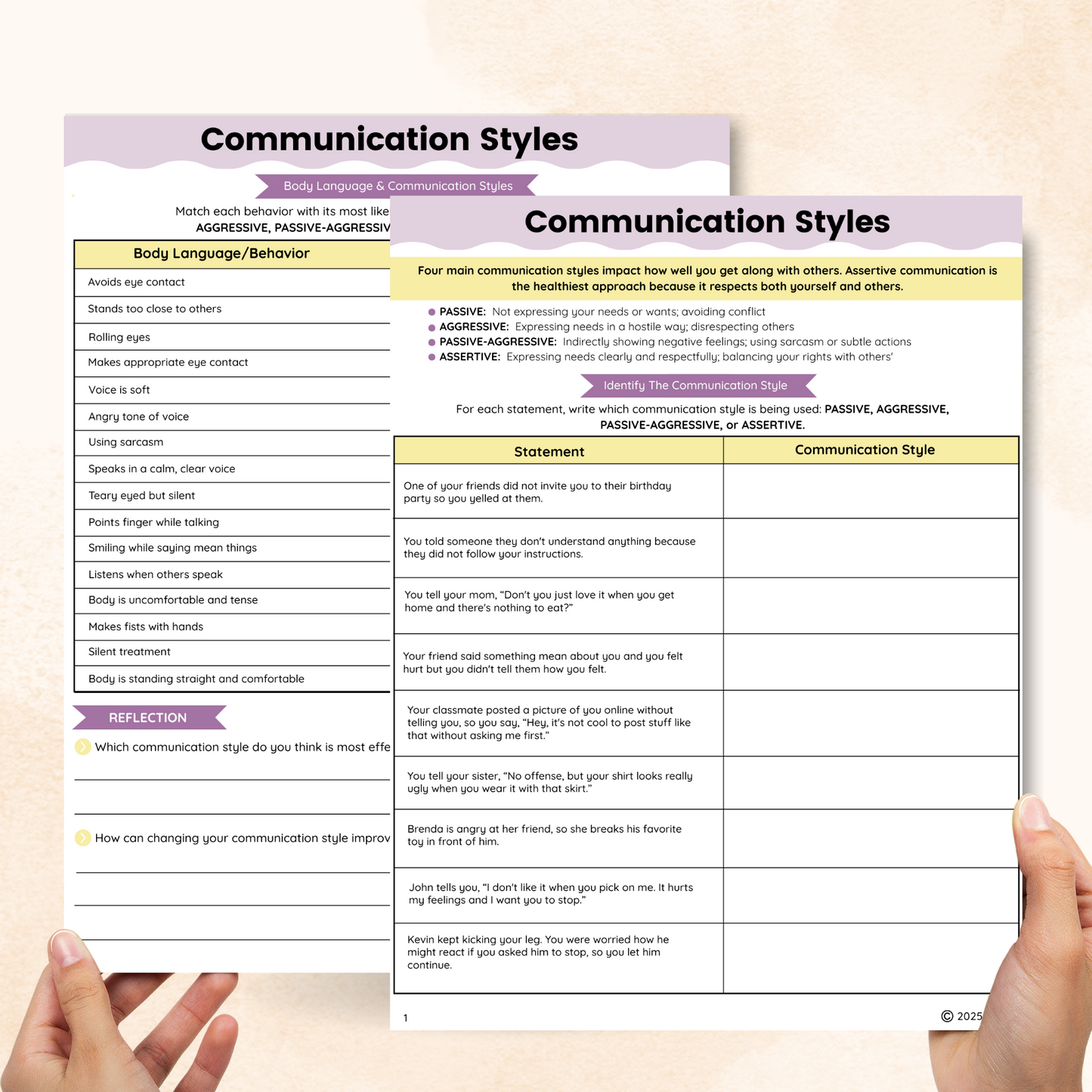
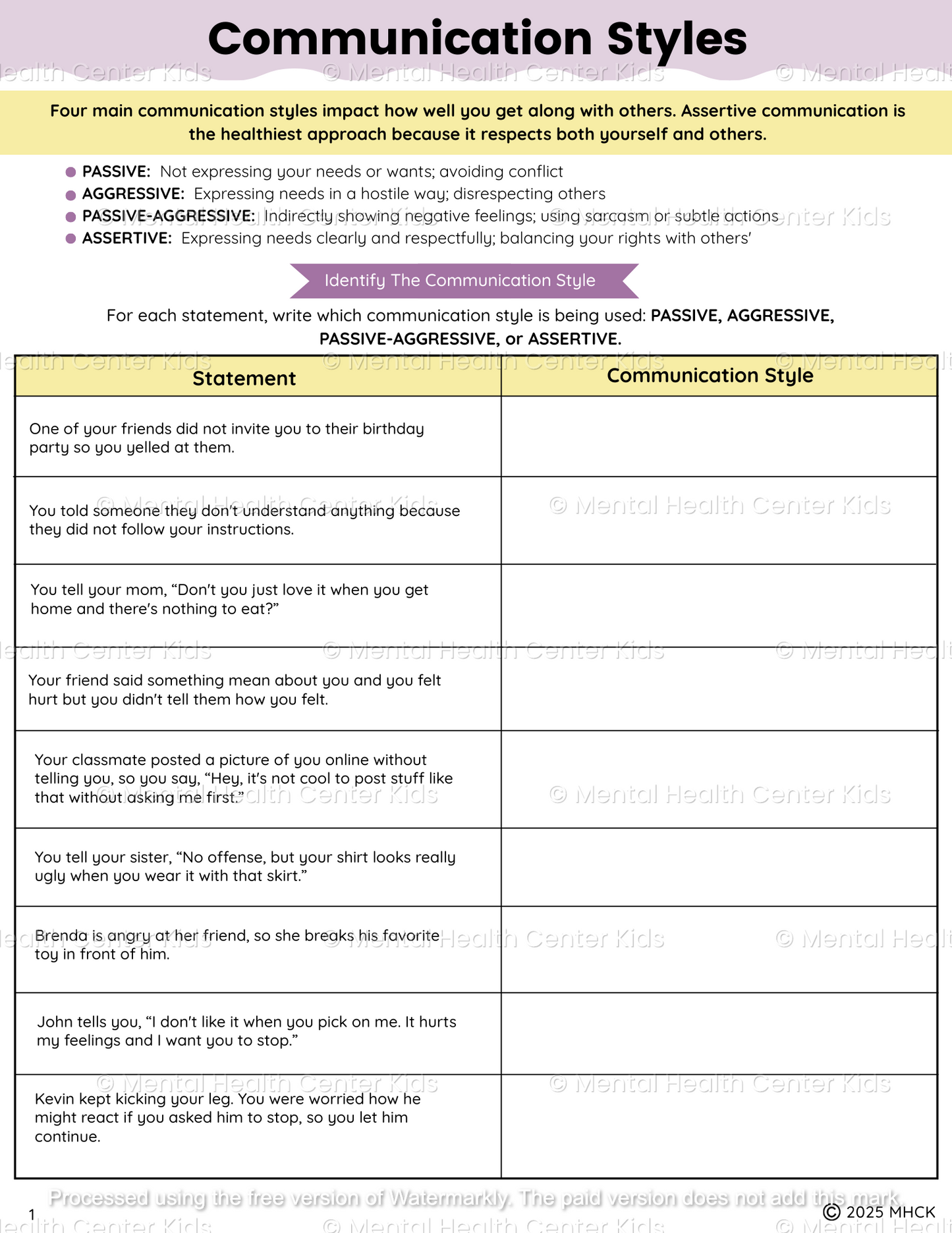
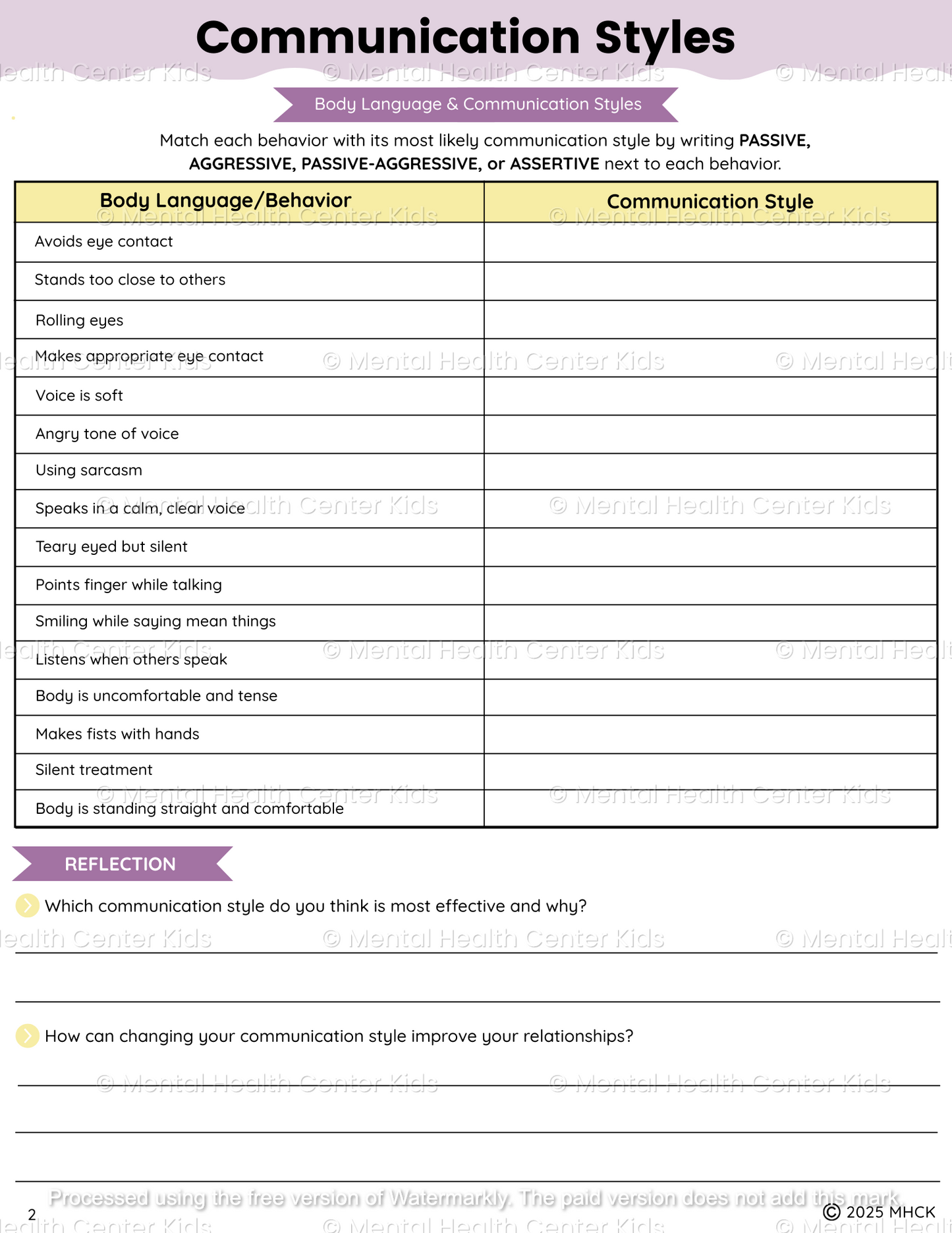
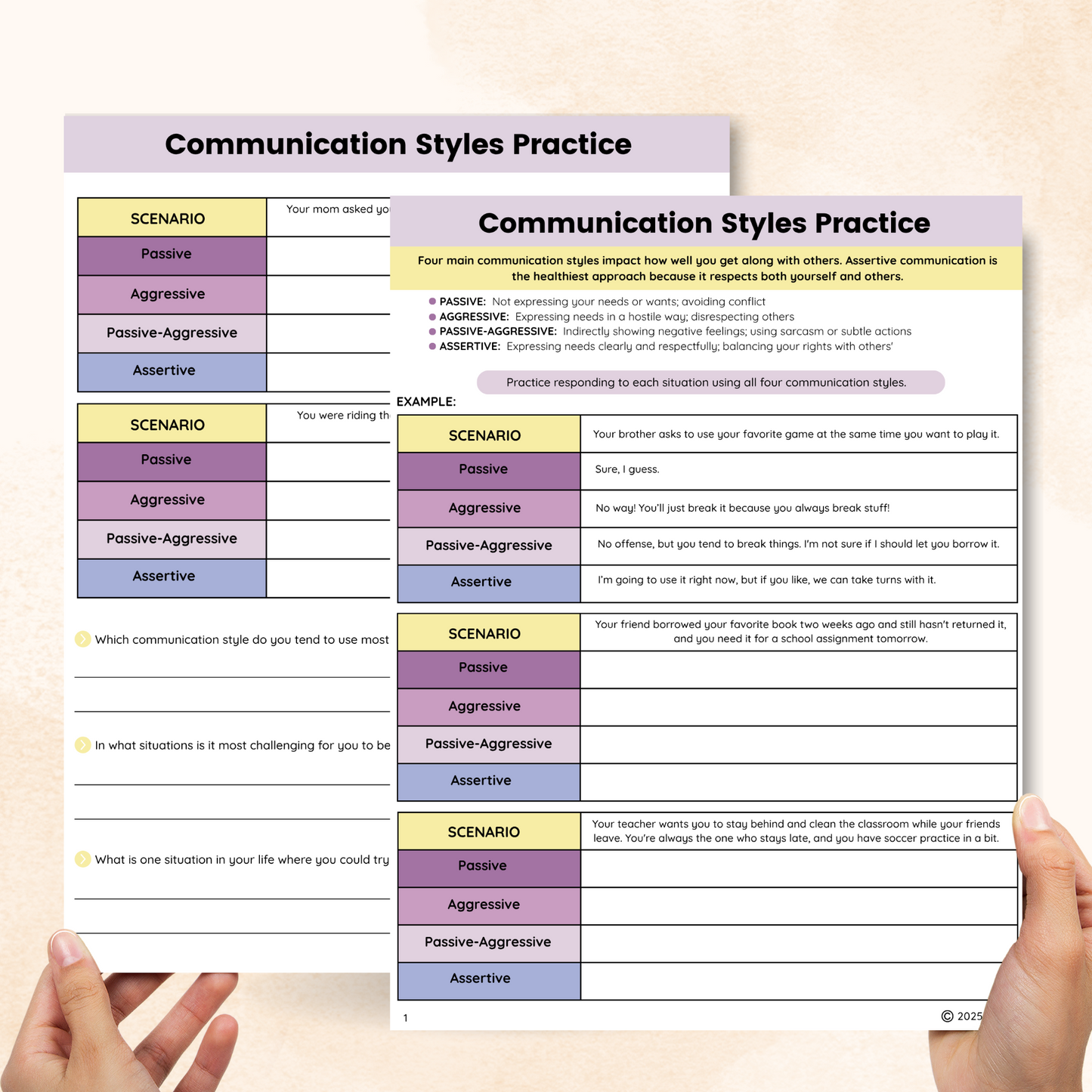
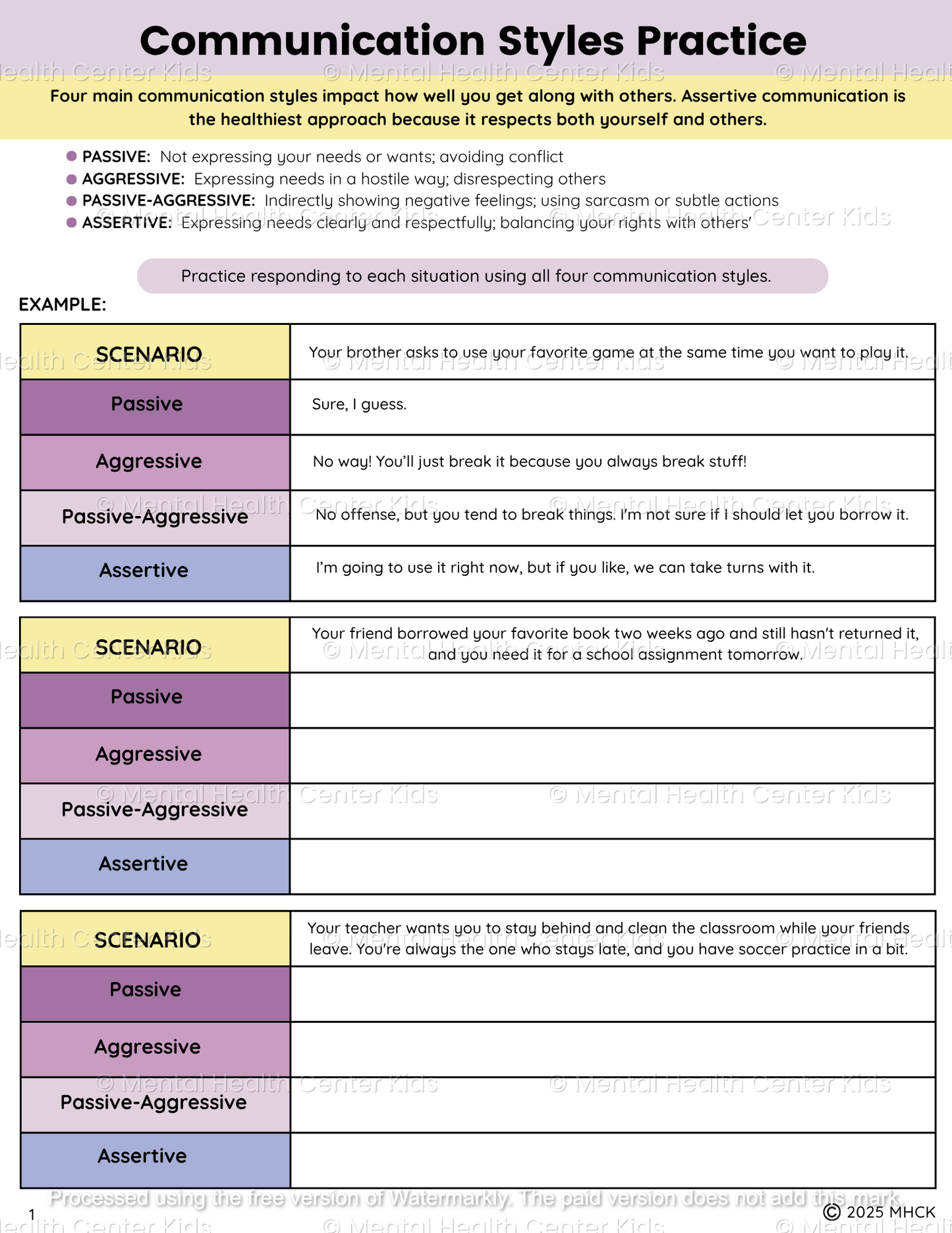
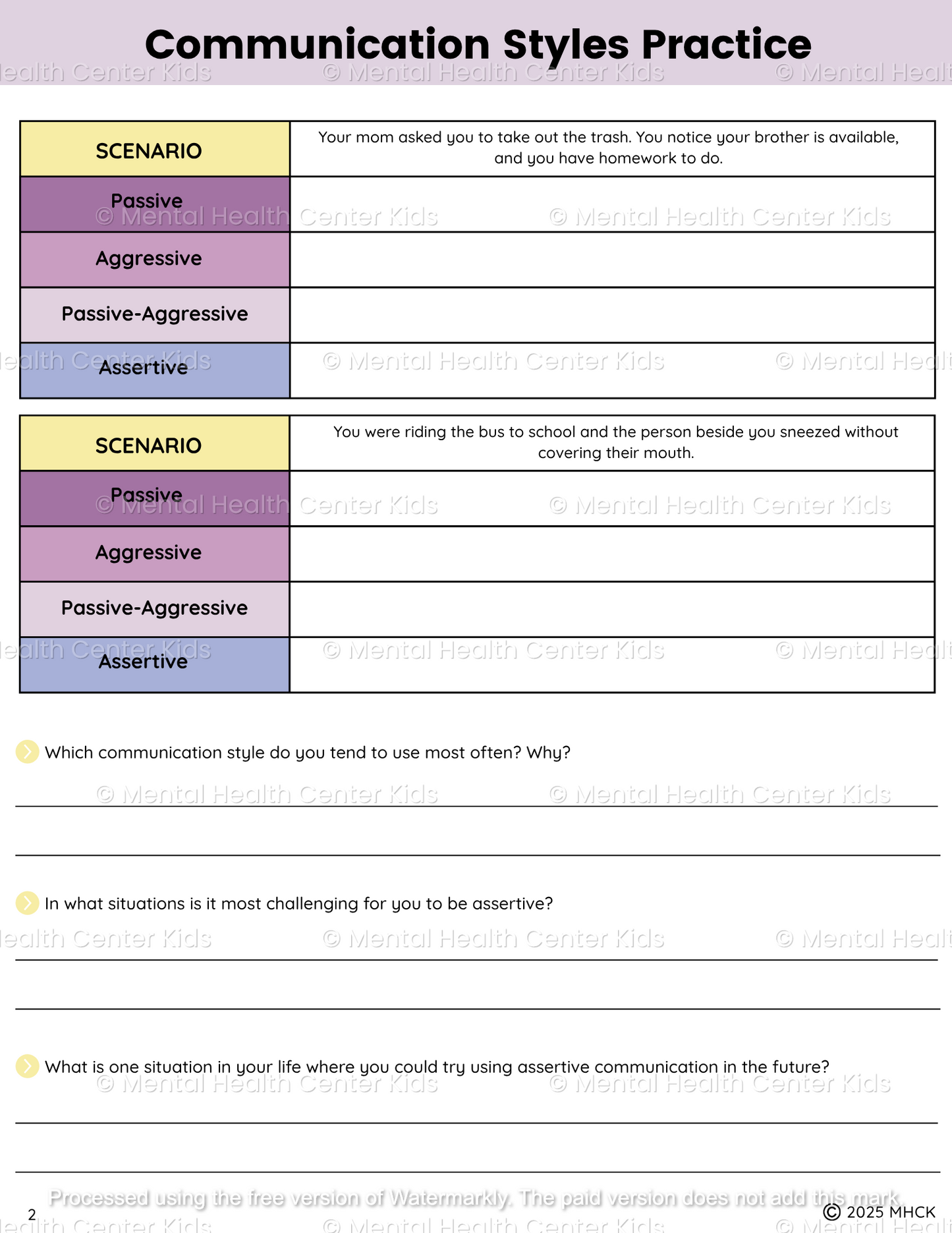

People communicate in different ways that can impact how well they get along with others. The four main communication styles include passive, aggressive, passive-aggressive, and assertive. Assertive communication is generally understood as the healthiest and most effective style of communication. Learning these styles can help clients build stronger relationships and better manage conflict.
The Communication Styles Worksheets include two separate two-page worksheet sets. The 2-page Communication Styles worksheets have an activity where clients read examples and decide which style each one represents. The 2-page Communication Styles Practice worksheets allow clients to practice responding to everyday situations using all four styles. They can also reflect on which style they use most and how they feel about trying to become more assertive.
Answering these worksheets helps kids and teens understand how their words and actions are perceived by others and how they can improve their communication. Because this takes time, practicing small strategies — like pausing before responding or trying out different ways to express thoughts — can lead to meaningful growth.
Caring adults can help by playing a “style switch” game. They act out short scenarios using one communication style at a time, and the child guesses which style is being used.
Our Communication Styles handout is a helpful resource to support the activities on these worksheets.
*This item is an instant digital download. A link to download your files will be emailed to you once payment is confirmed.
Want more resources like this? Check out our full catalog of social skills worksheets.
References:
- Gokalp, M. (2019). Analysis of communication styles between adolescents and parents (example of Kyrgyzstan). Contemporary Educational Researches Journal, 9(4), 119-127. https://doi.org/10.18844/cerj.v9i4.4442
- Pânişoară, G., Sandu, C., Pânişoară, I., & Duţă, N. (2015). Comparative study regarding communication styles of the students. Procedia - Social and Behavioral Sciences, 186, 202-208. https://doi.org/10.1016/j.sbspro.2015.04.066
- Instant digital download - 4 Pages
- File: Fillable PDF
- Size: 8.5" x 11"








